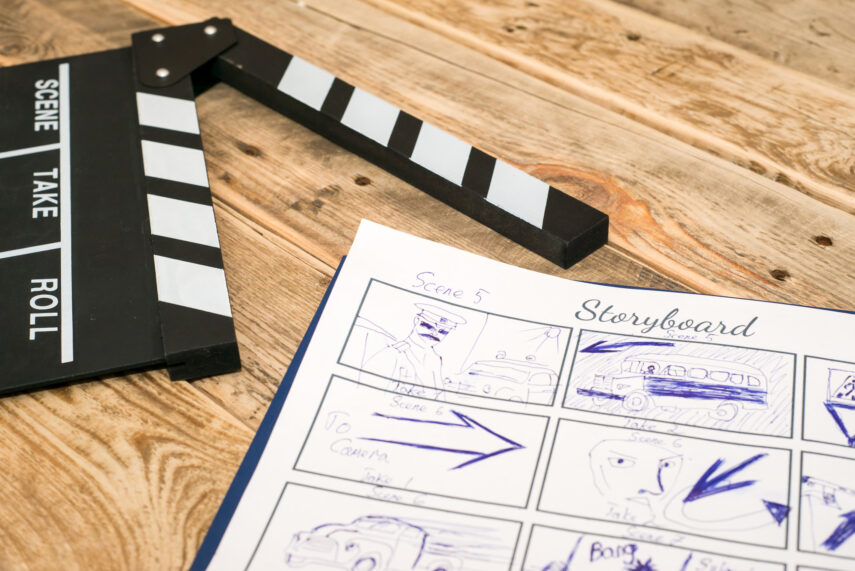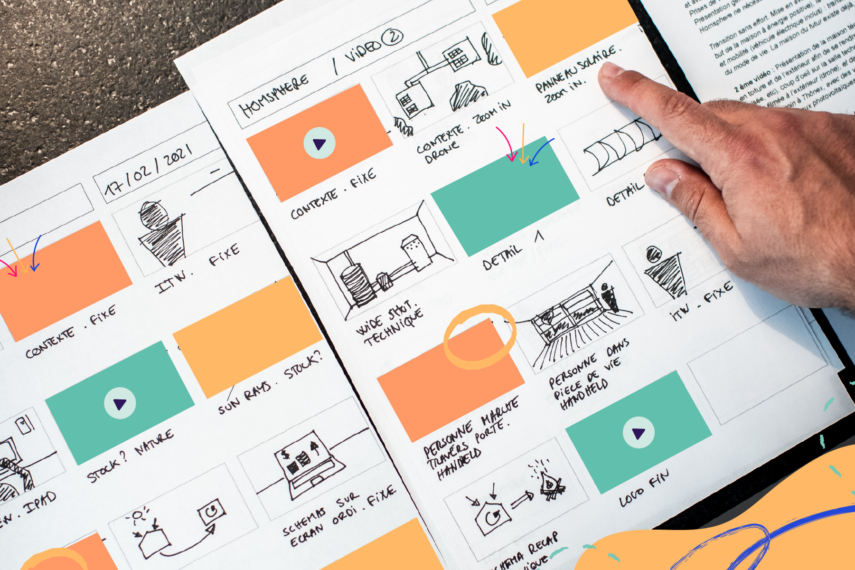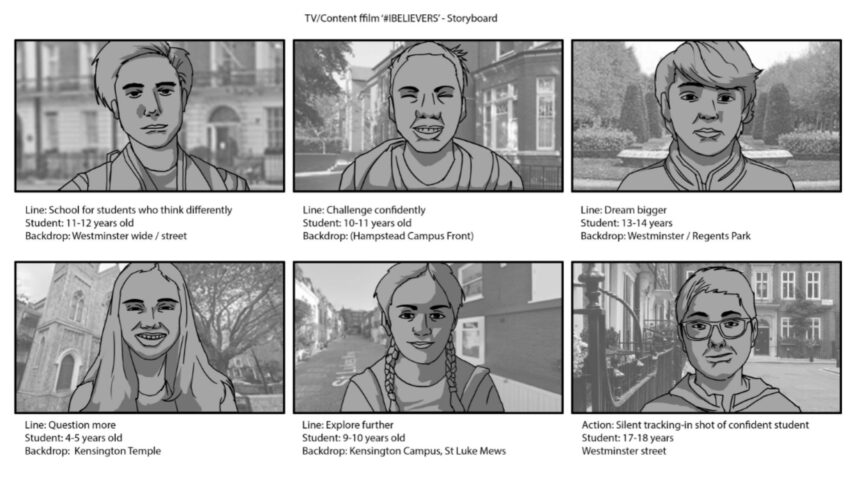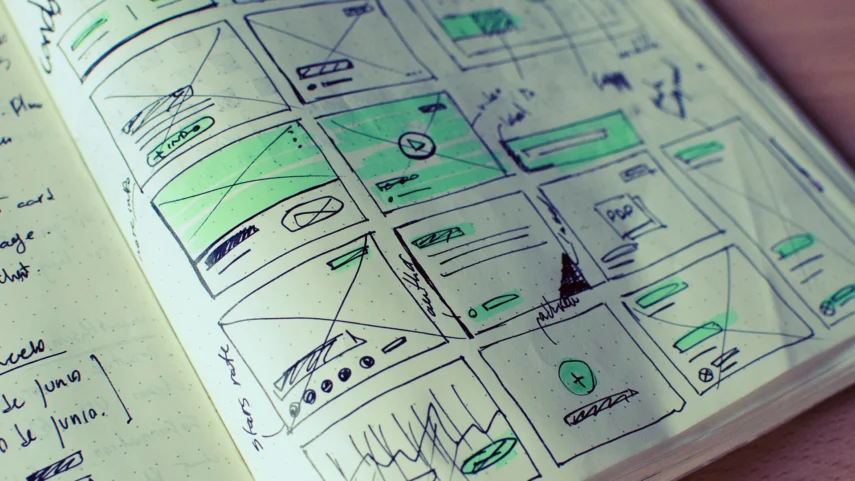When it comes to storyboarding and social media, one of the biggest challenges for creators and marketers is engaging their audience quickly and effectively. With so much content vying for attention on platforms like Instagram and TikTok, your message needs to be eye-catching, memorable, and easily digestible. One way to make your social media content stand out is by using the power of software like Storyboard That for effective storytelling.
Stories are a powerful way to capture attention, connect with your audience, and build engagement. But how do you tell a story in 60 seconds or less? The answer lies in effective preparation and thinking through all the details in the content – which is where storyboarding comes in handy.
What Is Storyboarding?

Storyboarding is a technique that filmmakers and animators use to plan out a visual story scene by scene. It involves sketching out a series of frames that represent the key moments in a story, along with notes on dialogue, camera angles, and other details.
Storyboarding is a useful technique that can be applied to social media content creation. By laying out the key moments of your story in visual form, you can ensure that your message is clear, concise, and captivating.
The Benefits of Storyboarding for Social Media

So why should you storyboard your social media content? Here are a few key benefits:
1. Helps You Refine Your Message
One of the biggest advantages of storyboarding is that it allows you to refine your message before you actually create the content. By mapping out the key moments in your story and identifying any potential issues or areas where the message might get lost, you can refine your content to make it more impactful.
2. Saves Time and Resources
Another advantage of storyboarding is that it can save you time and resources in the long run. By planning out your content in advance, you can avoid costly mistakes and revisions down the line. You can also use your storyboard to communicate your vision to a team of designers or video editors, which can help streamline the production process.
3. Enhances Engagement
Finally, storyboarding can help enhance engagement with your social media content. By using visual storytelling techniques to capture your audience’s attention and build emotional connections, you can create content that resonates with your followers on a deeper level. This can lead to increased likes, comments, and shares, as well as more loyal and engaged followers over time.
Tips for Storyboarding Your Social Media Content

Ready to start storyboarding your social media content? Here are some tips to help you get started:
1. Define Your Goals and Audience
Before you start storyboarding, it’s important to have a clear understanding of your goals and audience. Who are you trying to reach with your content, and what do you want them to do as a result? What is the key message you want to convey, and what emotions do you want to evoke in your audience?
2. Establish Your Story Arc
Once you have a clear understanding of your goals and audience, it’s time to establish your story arc. What is the beginning, middle, and end of your story? What are the key moments or turning points that you want to highlight? How can you create a sense of tension or drama that will keep your audience engaged?
3. Sketch Out Your Scenes
With your story arc in place, it’s time to start sketching out your scenes. Use stick figures and simple shapes to create rough storyboards that capture the key moments in your story. Don’t worry about getting every detail right – the goal is to create a rough outline that you can use to guide your content creation.
4. Add Notes and Details
Once you have the general sketches, be sure to add notes and details that will help bring your story to life. This might include notes on dialogue, camera angles, lighting, sound effects, or other visual elements. Remember, the more detail you can add to your storyboard, the more likely you are to create content that truly resonates with your audience.
5. Review and Refine
Once you have your storyboard in place, take some time to review and refine it. Look for any areas where the message might be unclear, or where the pacing might feel off. Think about how you can use visual elements like color, contrast, and movement to enhance the impact of your story.
How Storyboarding Can Benefit Different Types of Social Media Content

While storyboarding can benefit most types of social media content, there are certain types of platforms and formats that lend themselves particularly well to storytelling. Here are some examples:
Instagram Stories
Instagram Stories is a great platform for visual storytelling. With tools like stickers, GIFs, and filters, you can create dynamic and engaging content that your audience will love. Storyboarding your Instagram Stories can help you plan out the key moments in your story and ensure that your message is clear and impactful.
TikTok Videos
TikTok is another platform where storyboarding can be particularly effective. With its short-form video format and emphasis on viral trends, this is the perfect platform for creating shareable and relatable content. By using storyboarding to plan out your TikTok videos, you can create content that resonates with your audience and takes advantage of the latest trends.
YouTube Videos
YouTube is a platform that is mostly known for longer-form content, but that doesn’t mean you can’t use storyboarding to enhance your videos. Planning out the key moments in your video can help you keep the pacing tight and ensure that your message is clear and engaging. Plus, by using visual storytelling techniques, you can keep your audience hooked and watching until the end.
Facebook and Twitter Posts
Even posts on platforms like Facebook and Twitter can benefit from storyboarding. By planning out the key moments in your post, you can ensure that your message is clear and that your post is attention-grabbing. Whether you’re telling a brief story or using visuals to enhance your message, storyboarding can help you create more impactful content.
Final Thoughts

Storytelling is a powerful tool for social media content creation, and storyboarding is a technique that can help you harness its full potential. By planning out the key moments in your story and using visual storytelling techniques to engage your audience, you can create content that stands out, resonates, and drives action.
Whether you’re creating Instagram Stories, TikTok videos, or longer-form content on platforms like YouTube, storyboarding can help you create content that is clear, engaging, and impactful. By following the tips and techniques outlined in this article, you can become a more effective storyteller and take your social media content to the next level.







